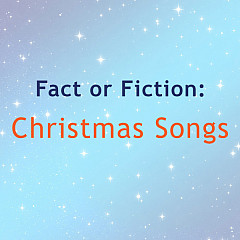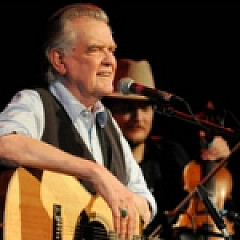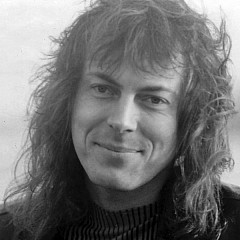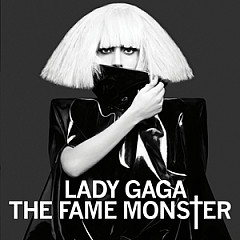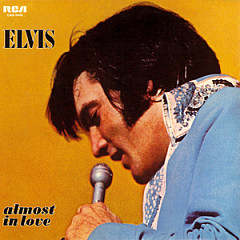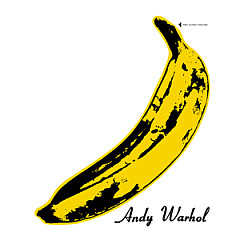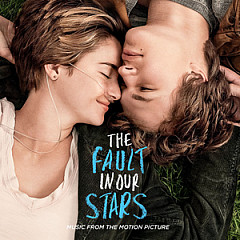
There are certain artists you automatically think of when a musical genre is mentioned. Case in point: folk music of the 1960s and... Peter, Paul and Mary. Peter Yarrow (vocals and guitar), Paul Stookey (vocals and guitar), and the late Mary Travers (vocals) helped put the importance of lyrical message back into popular music by offering originals and re-readings of other artists' compositions, resulting in such classic songs as "If I Had a Hammer," "Puff, the Magic Dragon," "Blowin' in the Wind," "Don't Think Twice, It's All Right," and "Leaving on a Jet Plane."
Yarrow spoke with Songfacts about Bob Dylan, the music scene from which the trio emerged, and the stories behind a pair of Peter, Paul and Mary classics.
Peter Yarrow: The essence and the circumstance of Greenwich Village was it was an atmosphere filled with great excitement and hopefulness, because there was this spirit in the air that things were changing, and dramatically so, for the better. That there was a re-evaluation of many of the constraints in the era. Prejudices and biases, and a very hierarchal society, had in many ways injured the growth of people's hearts and minds. There was a relationship between whites and blacks, Jews and Christians, women and men, the United States to other countries, that was being re-examined.
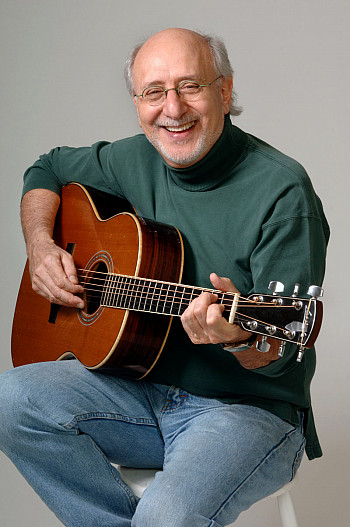 And the promise in the air was that this was going to change, and that we were going to become a more caring, just nation. The music that we were singing in Greenwich Village, which was folk music and music derived in a contemporary form from that, came from a great tradition of a certain kind of basic honesty. It was not the music that was written for dollars. It was music that came from the hearts of people to share their perspectives on the lives that they led, the challenges that they encountered, the struggles for making a better world. The rituals of change, like marriage and passing. Songs that reflected their work, their aspirations, their dreams. This music was devoid of an artifice: it was really very heartfelt. And if you sang it, you were influenced by that. It was a very precious thing to all of us to know and to inherit, people like The Weavers and Woody Guthrie and Pete Seeger, in particular.
And the promise in the air was that this was going to change, and that we were going to become a more caring, just nation. The music that we were singing in Greenwich Village, which was folk music and music derived in a contemporary form from that, came from a great tradition of a certain kind of basic honesty. It was not the music that was written for dollars. It was music that came from the hearts of people to share their perspectives on the lives that they led, the challenges that they encountered, the struggles for making a better world. The rituals of change, like marriage and passing. Songs that reflected their work, their aspirations, their dreams. This music was devoid of an artifice: it was really very heartfelt. And if you sang it, you were influenced by that. It was a very precious thing to all of us to know and to inherit, people like The Weavers and Woody Guthrie and Pete Seeger, in particular. The spirit in the Village at that time was not one of competition amongst the artists. Nobody really imagined that anybody would become wealthy or famous at the time. The folk revival had not really emerged with the full force that it did when folk music dominated the pop music charts for quite some time. It was a time of enormous creative chemistry that was inspiring us all. There was the most heartfelt of communities - that still exists among people in the folk music arena. And this is quite distinct from the picture that was painted for instance by the Coen brothers film [2013's Inside Llewyn Davis] of Greenwich Village at the time, in very - to me - ways that were uncharacteristic in the extreme. Now, that doesn't mean that somebody doesn't have the right to write something that is not characteristic of what was going on. That's fine. But it certainly did not represent what I saw and experienced there.
Songfacts: What are some memories of Bob Dylan from that time period?
Yarrow: When he came to Greenwich Village, it was more as if he was an acolyte of Woody Guthrie. He was speaking like him, he was singing the way Woody Guthrie did, which was a style that he adopted. In a way, that was also true of Jack Elliott. But with Bobby, he brought something entirely fresh and new to the scene, because that may have been his style, and creativity begins with imitation. We don't invent ourselves out of pure whole cloth, we reach for people and moments of inspiration. And he was brilliant. He would write a song based on something that he read in the newspaper, and he'd sing it that night. It was wonderful.
Songfacts: How did the songwriting work primarily in Peter, Paul and Mary?
Yarrow: On some songs, we collaborated, but most of them were either folk songs or songs that we fell in love with that were written by other people. We didn't look for people who were famous as hit songwriters - that wasn't our intention or focus. Bob Dylan was an unknown, for all intents and purposes, when we recorded "Blowin' in the Wind." That was also true of John Denver, Gordon Lightfoot, and Laura Nyro. We just found songs that moved us, and we did their songs.
We did write our own songs - Noel and I did. Paul's name is Paul Noel Stookey. He's a wonderful writer, today and then. Really amazing. On the first album [1962's self-titled], he wrote the song "Early In The Morning." And then, we would take certain traditional songs and we would make them our own, changing lyrics and sometimes the melody but basically singing them the way they were. So, our first album was mainly traditional songs, with the exception of Pete Seeger's "If I Had a Hammer," and Hedy West's "500 Miles," that was written very much in the style of and with the heart of folk music.
You see, folk music was originally about music that was from an indigenous culture that was unspoiled, and therefore, had its own characteristics. But as folk music exists over a period of time, what happens is that it is handed down by the oral tradition. That means it's not written out, it's just shared person to person, through spoken word and sung word. And then, it changes, as it comes, say, from England to the Southern Mountains. Then it becomes a different form. So, all of the changes that we made were in that spirit. Yes, we loved the songs, but we had to sing it as ourselves, just as Southern Mountain denizens would not sing it the same way as it was sung in England, a century earlier.
Songfacts: Before, you mentioned Laura Nyro. Did you know her well?
Yarrow: Laura Nyro actually went to my high school. She was younger than I. She was a genius writer. A wonderful, amazing person. I didn't know her hardly at all, but I loved her music. We recorded "And When I Die," and it later became a big hit for Blood, Sweat & Tears.
Songfacts: What do you recall about the writing of "Puff, the Magic Dragon"?
Yarrow: Lenny Lipton and I were at Cornell, and it was exam time. He came to my place in Collegetown, sat down at the typewriter, and wrote some poetic words - he had been thinking about Ogden Nash for a while. And he wrote part of what became the lyric. He actually left the piece of paper in the typewriter when he left because he was absorbed in getting to his exams. It was not intended to be a lyric of a song or anything - it was just something that he typed on paper, and I looked at it and loved it. I wrote the rest of the words to give it a song form and a dramatic arch, and the music to it.
Later, on the second album [1963's Moving], when we were looking for children's songs - we did some children's songs on the first album, including "Autumn to May" and "It's Raining" - I suggested "Puff, the Magic Dragon," and we put it on the album, without any thought that it might ever become popular in any important way. Yet, it happened spontaneously at some point, because a DJ somewhere in the Northwest started to play it on the radio, and it just took off, and it's the song that it now is.
Yarrow: When you ask somebody for an inspiration behind a song, generally, songwriters will tell you that it emerges out of a very complex equation, that is hard for them to define, and a multitude of forces came together in a very unusual way. It was written at the height of the anti-war movement, and really, I was thinking about my brother, and the possibility of his being drafted. My younger brother. I wrote it from that perspective.
Songfacts: Why do you think the music of the '60s has proven to be so influential and enduring over the years?
Yarrow: Well, the times have made it such. The music itself was particularly apropos of the times. The times were ones of enormous change in the country and the world, and that involved a struggle - the civil rights movement and then the anti-war movement followed thereafter. And the music that was shared came out of a tradition of assertion - points of view in that regard. It was music that had content, so it's not music as style. I mean, it had a style, but its main thrust was content.
 For instance, today's music, generally, the content is very superficial. Whereas when you looked at the songs that were sung then, they became the soundtrack of the changing consciousness of the nation, to one that aspired to freedom and equality and to the residual realities of slavery and the inequities suffered by African Americans in our country, and it became the music that in many ways consolidated the hearts and spirits of people in the movement, like the anti-war movement, the women's movement, the anti-apartheid movement, the environment. So, it was a music that embodied those kinds of impulses and those kinds of efforts, and it became the way in which many people were first exposed to the passion of commitment to making the world a better, fairer place.
For instance, today's music, generally, the content is very superficial. Whereas when you looked at the songs that were sung then, they became the soundtrack of the changing consciousness of the nation, to one that aspired to freedom and equality and to the residual realities of slavery and the inequities suffered by African Americans in our country, and it became the music that in many ways consolidated the hearts and spirits of people in the movement, like the anti-war movement, the women's movement, the anti-apartheid movement, the environment. So, it was a music that embodied those kinds of impulses and those kinds of efforts, and it became the way in which many people were first exposed to the passion of commitment to making the world a better, fairer place. That's why it was so important. If you went to the Civil Rights March of '63, you would have heard Peter, Paul and Mary singing "Blowin' in the Wind" and "If I Had a Hammer." You would have heard Bobby Dylan sing, and Joan Baez. It was there at the marches against the war, it was there at the Selma to Montgomery marches, there was a march on Washington in 1969 to end the war in Vietnam, with half a million people participating. I co-organized that with Cora Weiss, who is a Nobel Prize nominee.
There was a time you now see emerging once again, where music is becoming a kind of gravitational force that is bringing people's hearts together to try to assert a perspective of fairness and justice and to counter the extraordinary challenges that we are dealing with now, in this time, via the perspectives and persona of Donald Trump.
October 5, 2017
For more, visit peteryarrow.net.
More Songwriter Interviews


